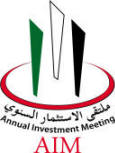|
|
|
Management Courses in USAManagement in all business and organizational activities is the act of getting people together to accomplish desired goals and objectives using available resources efficiently and effectively. Management comprises planning, organizing, staffing, leading or directing, and controlling an organization (a group of one or more people or entities) or effort for the purpose of accomplishing a goal. Resourcing encompasses the deployment and manipulation of human resources, financial resources, technological resources, and natural resources. Because organizations can be viewed as systems, management can also be defined as human action, including design, to facilitate the production of useful outcomes from a system. This view opens the opportunity to 'manage' oneself, a pre-requisite to attempting to manage others. Basic Functions Management operates through various functions, often classified as planning, organizing, staffing, leading/directing, and controlling/monitoring .i.e Planning: Deciding what needs to happen in the future (today, next week, next
month, next year, over the next 5 years, etc.) and generating plans for action. Basic Roles Interpersonal: roles that involve coordination and interaction with
employees. Management Skills Technical: used for specialized knowledge required for work. Formation of the business policy The mission of the business is the most obvious purpose—which may be, for
example, to make soap. Implementation of policies and strategies All policies and strategies must be discussed with all managerial personnel
and staff. All policies must be discussed with all managerial personnel and staff that is required in the execution of any departmental policy. Organizational change is strategically achieved through the implementation of the eight-step plan of action established by John P. Kotter: Increase urgency, get the vision right, communicate the buy-in, empower action, create short-term wins, don't let up, and make change stick. Policies and strategies in the planning process They give mid- and lower-level managers a good idea of the future plans for
each department in an organization. Levels of Management In organizations, there are generally three different levels of managers: first-level managers, middle-level managers, and top-level managers. These levels of managers are classified in a hierarchy of importance and authority, and are also arranged by the different types of management tasks that each role does. In many organizations, the number of managers in every level resembles a pyramid, in which the first-level has many more managers than middle-level and top-level mangers, respectively. Each management level is explained below in specifications of their different responsibilities and likely job titles. Top-Level Managers: typically consist of Board of Directors, President, Vice President, Chief Executive Officers etc. These individuals are mainly responsible for controlling and overseeing all the departments in the organization. They develop goals, strategic plans, and policies for the company, as well as make many decisions on the direction of the business. In addition, top-level managers play a significant role in the mobilization of outside resources and are for the most part responsible for the shareholders and general public. Top-level managers typically consist of Board of Directors, President, Vice President, Chief Executive Officers etc. Middle-Level Managers: typically consist of General Managers, Branch Managers, Department Managers, etc. These individuals are mainly responsible to the top management for the functioning of their department. They devote more time to organizational and directional functions. Their roles can be emphasized as executing plans of the organization in conformance with the company's policies and the objectives of the top management, they define and discuss information and policies from top management to lower management, and most importantly they inspire and provide guidance to lower level managers towards better performance. First-Level Managers: typically consist of Supervisors, Section Officers, Foreman, etc. These individuals focus more on the controlling and direction of management functions. For instance, they assign tasks and jobs to employees, guide and supervise employees on day-to-day activities, look after the quantity and quality of the production of the company, make recommendations, suggestions, and communicate employee problems to the higher level above, etc. In this level manager’s are the "image builders" of the company considering they are the only ones who have direct contact with employees. Instructional Needs at Different Management Levels First-Level Managers: Basic supervision. Middle-Level Managers: Designing and implementing effective group and intergroup work and
information systems. Top-Level Managers: Broadening their understanding of how factors such as competition, world economies, politics, and social trends influence the effectiveness of the organization. Source: Wikipedia Management Training Courses
|
Wall Street
|
|
Wall Street Research |
|






